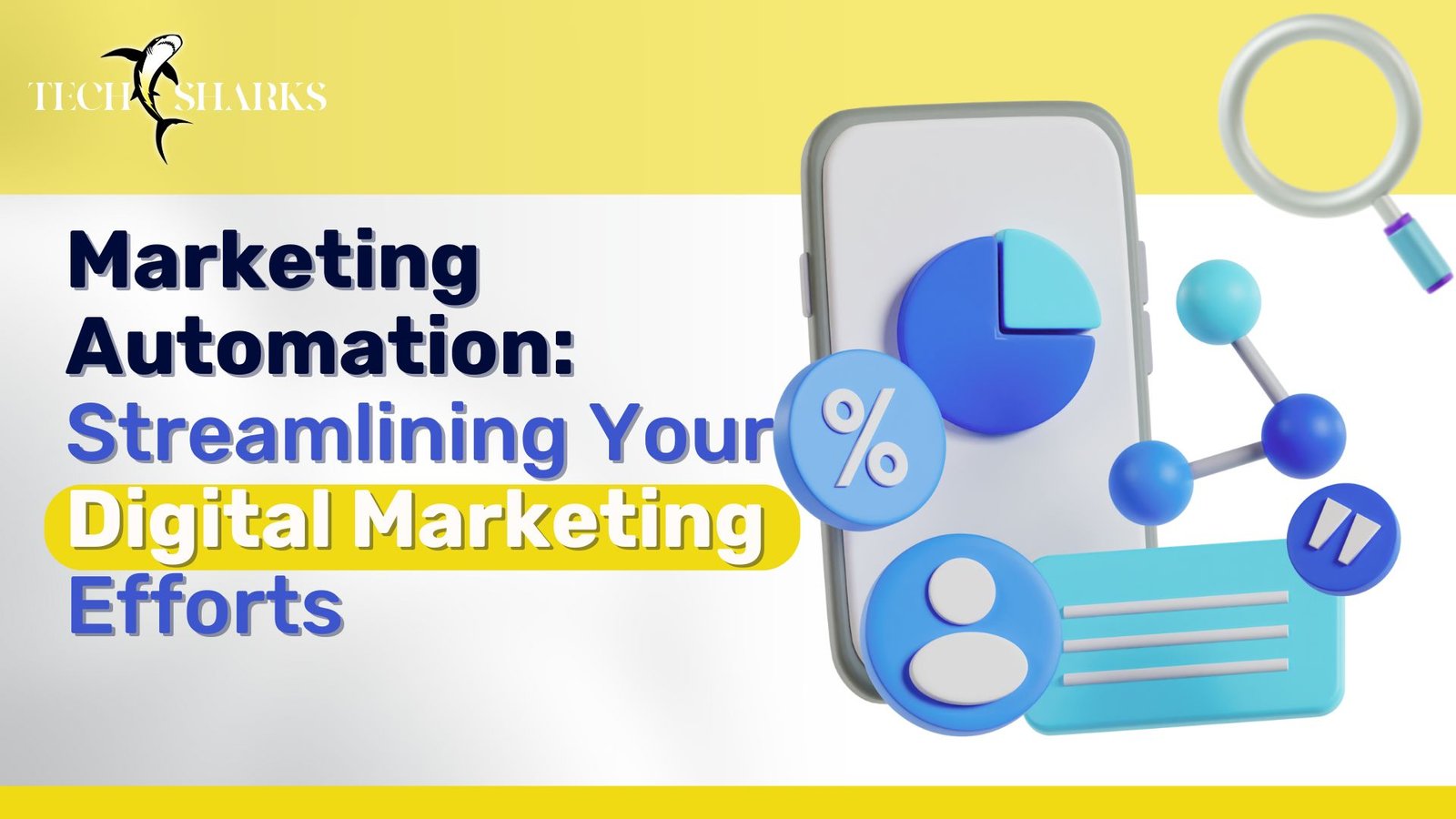Success in the ever-changing world of digital marketing lies in mastering its key pillars. Welcome to a journey where strategy meets innovation and engagement intersects with technology. In this SEO-friendly blog, we’ll dissect the 15 foundational pillars that serve as the foundation of a strong digital marketing strategy with Techsharks, which is a leading Digital marketing agency. Buckle up as we explore the dynamic landscape at the intersection of creativity and data-driven precision, where brands thrive, audiences engage, and success unfolds. Do you know how many main pillars of digital marketing you should know about? Let’s delve into the top 15 main pillars of digital marketing to find out how to unlock your brand’s digital potential.
1 Website Excellence
One of the first main pillars of digital marketing is a perfect website Optimize images regularly and use caching to ensure fast page loading. Prioritize a design approach that prioritizes mobile users first, ensuring a seamless experience. To increase user engagement, incorporate interactive elements such as quizzes, surveys, or live chat.
In addition, accessibility features include: Use alt text for images and make your website accessible to people with disabilities. Conduct regular website audits to identify and correct broken links, outdated content, and other issues.
2 Engaging Content Strategy
Create content with timeless value to keep it relevant over time. Likewise, use narrative structures to elicit emotions and connect with your audience. Encourage customers to share their experiences with your products/services.
Use paid promotion strategies to extend the reach of your most valuable content. Alignment of the Content Calendar: Check that your content strategy corresponds to seasonal trends, holidays, and industry events.

3 SEO Mastery
Optimize your website for local searches, including keywords that are specific to your location.
Long-Tail Keyword Integration Use specific, longer phrases to target specific audience segments.
Moreover, use schema markup to provide additional context about your content to search engines. Refresh and republish existing content regularly to signal freshness to search engines. Analyze your competitors’ SEO strategies and adjust your approach as necessary.
4 Social Media Expertise
Monitoring social media platforms for mentions of your brand and industry keywords is a good way to start. Sharing User-Generated Content. Likewise, display customer-generated content on your official social media channels. Increase brand visibility, create and promote branded hashtags.
Use paid promotions strategically to reach specific audience segments. Customize your content for each platform, taking into account its unique features and audience expectations.
5 Email Marketing Expertise
Utilize data to recommend products or services based on individual customer preferences. Refine your audience segments regularly based on changing customer behaviours. In addition, implement automated emails that are triggered by specific user actions, such as abandoned carts.
Make your emails visually appealing, mobile-friendly, and click-through-friendly. To optimize email performance, test different elements such as subject lines and CTAs regularly.
Also Read: Top 11 Challenges of Digital Marketing And Ways to Overcome These Challenges
6 Decision-Making Based on Data
Discover the entire path a user takes from first contact to conversion. Similarly, determine marketing effectiveness by evaluating the contribution of each touchpoint in the customer journey. Predict future trends and make proactive decisions using data.
Analyze customer segments to identify high-value customer segments for targeted marketing efforts. Likewise, combine data from multiple channels to get a complete picture of your marketing performance.
7 Mobile App Optimization
If applicable, ensure that your mobile app provides a seamless experience. Consider Voice Search. As more people use voice-activated devices, optimize your content for voice search. Likewise, tailor email campaigns so that they display properly on mobile devices.
In addition, use Accelerated Mobile Pages (AMP) to improve mobile browser loading times. To increase relevance, use location-based targeting for mobile users.
8 CRO (Conversion Rate Optimization)
Analysis of Heatmaps: Use heatmaps to visualize user interactions and identify areas of interest. Experiment with multiple variables at the same time to discover the most effective combinations. Integrate social proof such as customer reviews, testimonials, and social shares to increase credibility.
Use popups strategically to keep visitors on your site who are about to leave. Likewise, tailor calls to action based on user behaviour, preferences, or location.
9 Paid Advertising Perfection
Experiment with different ad copy variations to find the most compelling messages.
Target users who have previously interacted with your website or ads with remarketing strategies. Likewise, create distinct audience segments to target with personalized ads.
For a consistent user experience, make sure your ad content and landing page are in sync. Additionally, review and adjust your budget allocation regularly based on the performance of various campaigns.
10 Long-Term Relationships with Influencers
Foster ongoing partnerships with influencers for long-term brand advocacy. Encourage influencers to create content that incorporates your brand authentically. Most importantly, using engagement and conversion metrics, assess the impact of influencer collaborations regularly.
In addition, collaborate with influencers to offer exclusive promotions or discounts to their audience. Investigate partnerships with micro-influencers for niche audience targeting.
11 Customer Focus
Continuously improve chatbot interactions based on customer feedback and changing needs. Integrate the feedback loop by actively seeking customer feedback and using it to improve products, services, and overall experiences. In addition, maintain a consistent experience across all customer touchpoints, both online and offline.
Personalize communication based on customer preferences and previous interactions. Likewise, address potential problems before they become major issues, demonstrating your dedication to customer satisfaction.
12 Employee Brand Training
Ensure that all employees understand and embody the brand values in their interactions. To maintain consistency, update and distribute brand style guides on a regular basis. Additionally, ensure tone and messaging consistency across all communication channels.
Have a plan in place to maintain brand consistency during difficult times. To maintain trust, when rebranding, communicate changes transparently and strategically.
13 Video Marketing
To interact directly with your audience, host live Q&A sessions, product launches, or behind-the-scenes glimpses. Include interactive elements such as polls, clickable links, or quizzes within your videos. Optimize your playlists to encourage viewers to watch more of your video content.
To maximize reach, share videos across multiple platforms. In addition, analyze video performance metrics regularly to better understand viewer behaviour and preferences.

14 Personalization Algorithms for AI Integration
Use artificial intelligence algorithms to provide personalized recommendations based on user behaviour. Use predictive analytics to forecast trends and proactively adjust marketing strategies. In addition, constantly improve chatbots by incorporating natural language processing and machine learning for improved user interactions.
Use AI to create content that is tailored to individual user preferences. Likewise, leverage AI tools to extract valuable customer insights that can be used to inform marketing decisions.
15 Ongoing Learning and Adaptation
Subscribe to Industry Newsletters: Stay up to date with regular updates from reputable sources in the digital marketing industry. Attend webinars and workshops to expand your knowledge and learn from industry experts. Participation in digital marketing includes forums and communities to interact with peers and stay up to date on industry discussions.
Enroll in courses and certifications on a regular basis to continually improve your digital marketing skill set. Stay ahead of the competition by experimenting with new technologies and trends such as voice search optimization and augmented reality marketing.




